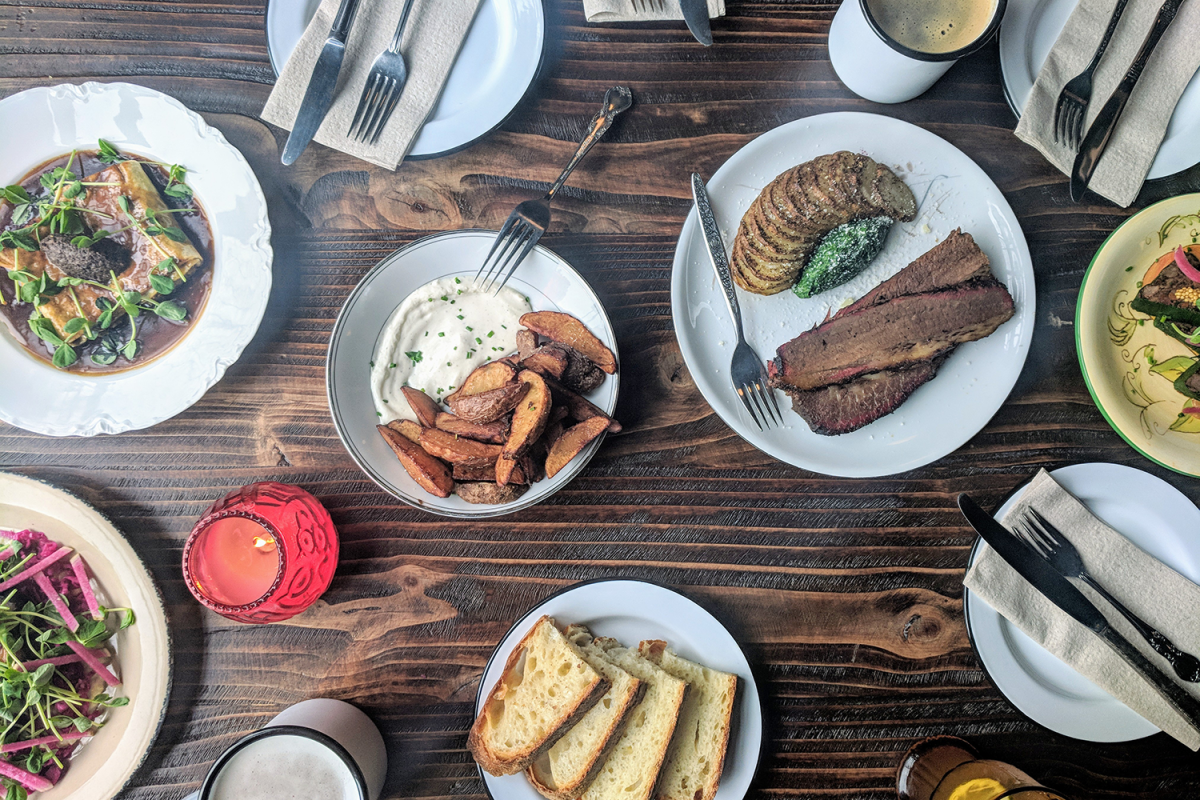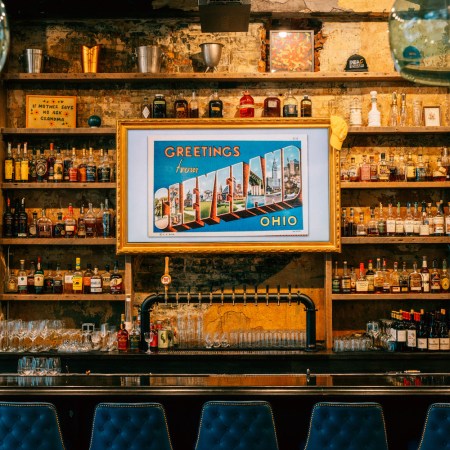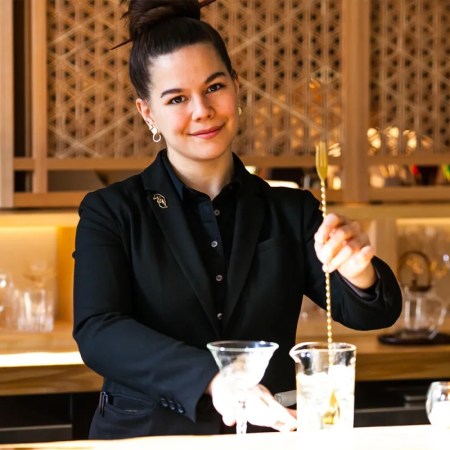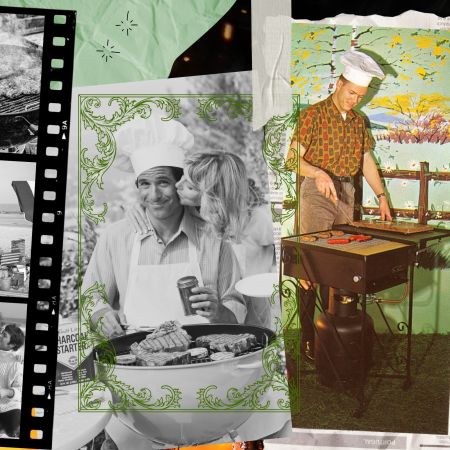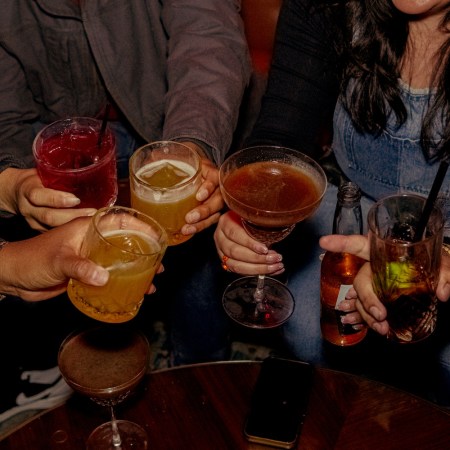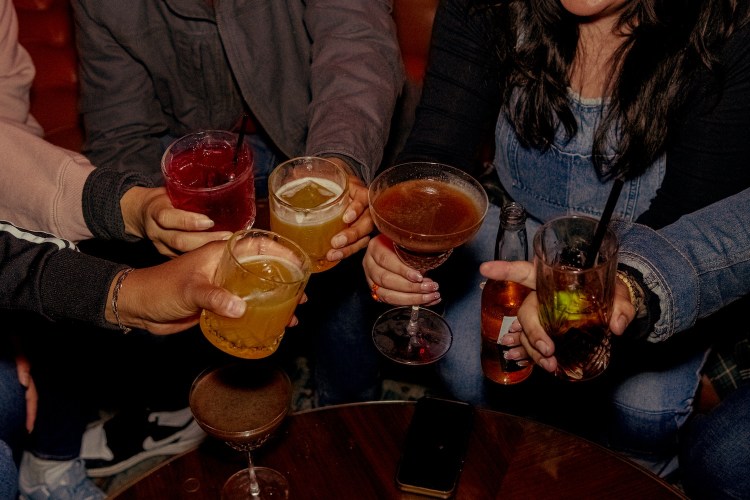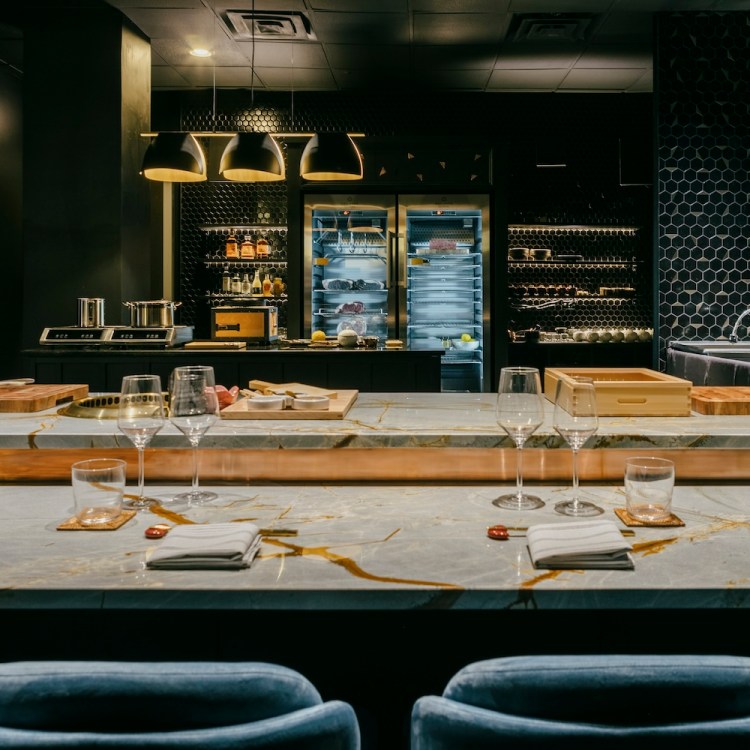This is the second installment of a two-part series profiling the best pitmasters in Chicago. The first installment covered the places around the city where they like to buy their meat and fixings when they’re grilling at home.
Chicago isn’t shy about laying claim to a lengthy list of iconic cultural exports.
In music, you have Chicago House, Chipmunk Soul, Drill, Blues, Jazz and Dixieland, plus dances like Steppin’, Footwork and the Cha-Cha Slide. There are well-defined Chicago schools of architecture, economics, editorial style and improv comedy. And, of course, there’s the food: Italian beef, deep-dish pizza and Vienna Beef hot dogs, dragged through the garden, sprinkled with celery salt, doused in bright yellow mustard (never ketchup) and tucked into a steamed poppy seed bun.
But what about Chicago BBQ? That’s a concept that’s trickier to define.
Consider that just about every other great American meat haven abides certain regional truths that intrepid eaters hold as self-evident. Kansas City has their burnt ends and thick tomato- and molasses-based sauce. Texas is famous for tender smoked brisket and flavorful dry rubs. South Carolinians prefer pork pulled from a whole hog and drenched in tangy mustard sauce. Memphians dress their nachos with juicy shredded pork and sweet, slightly spicy tomato sauce. And the good folks of Alabama swear by smoked chicken under a blanket of creamy, pepper-flecked white sauce.
It only makes sense that Chicago, a city Carl Sandburg deemed deemed “the hog butcher for the world” and home to more BBQ joints than you can shake a spare rib at, would also have its own signature smoke style. So what gives?
We turned to some of the area’s most seasoned experts to get to the bottom of this saucy pit of Chi-town ambiguity. Here’s what we learned.
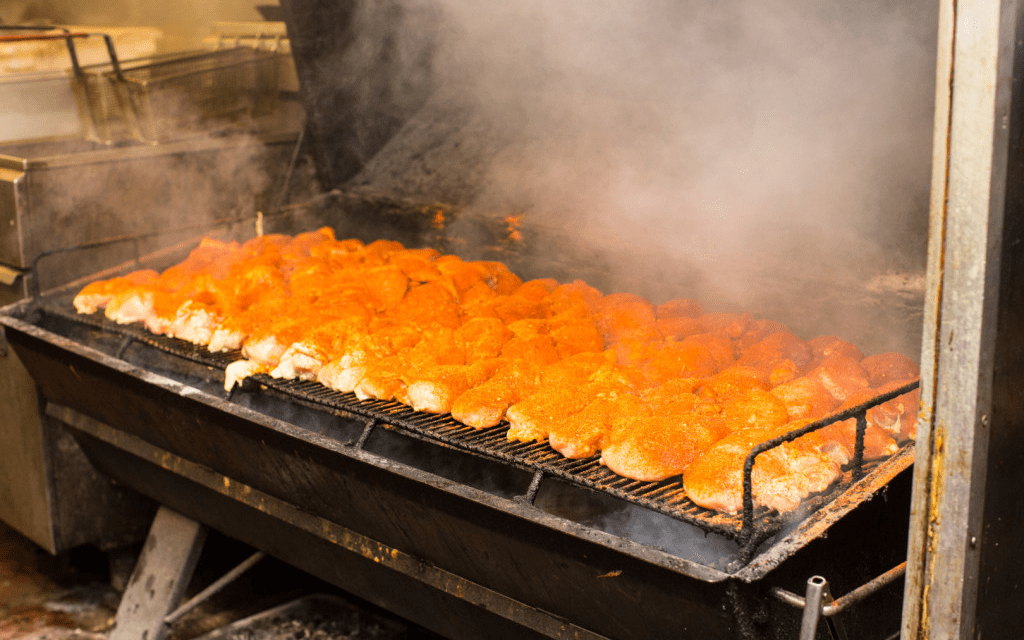
Like the city itself, Chicago BBQ weaves together different cultures and traditions
“To put it as simply as possible, Chicago BBQ is a patchwork,” says Chef Brian Bruns.
Backed by years of fine dining experience at lauded spots like Spaggia, Bruns and his wife Taylor recently opened Flat & Point, a welcoming Logan Square eatery where wood-fired BBQ meets cheffy technique. “You’re going to find Carolina-style at one place, Texas-style at another. I don’t know if there is one Chicago style, but that’s what makes it great. You get all these people from different parts of the country coming to the third largest city in the nation, putting out what they like to do and hoping people enjoy it.”
“The term ‘melting pot’ keeps coming to mind,” adds Executive Chef Amanda Downing Salas of Smoke Daddy Wrigleyville. A hub for sauce-laden smoked meats and nightly live music, the loft-like space has become a pregame staple for many a hungry Cubs fan. “You’re going to see Kansas City-style like what we do,” says Downing Salas. “You’re going to see Memphis-style and Texas-style — all of these things. As a whole, it’s still kind of evolving.”
“I would define Chicago BBQ like I would define wine: you have Old World and New World, and Chicago is Old World,” declares Ken Robinson, Executive Chef of Porkchop in Hyde Park. Now in its fifth year, the upbeat South Side outpost specializes in dry-rubbed smokehouse classics and other crowd-pleasing comforts. “I guess it’s the history of having slaughterhouses here, so it was easy to procure meat. There are so many small BBQ places, and they each take on a reflection of their neighborhood. Some of them carry hot links, some of them don’t. Some carry beef sausage. Some boil their ribs before they cook them. There are so many different avenues that you can travel down with Chicago BBQ.”
“I don’t believe there’s any particular theme for Chicago BBQ, being a major city with lots of transplants,” notes Charlie McKenna, the mastermind behind popular North Avenue mainstay Lillie’s Q as well as the restaurant’s namesake lineup of bottled sauces and rubs. “Not being in a traditional BBQ region allows everyone here to do their style of BBQ with influences from wherever they’ve trained or come from.”
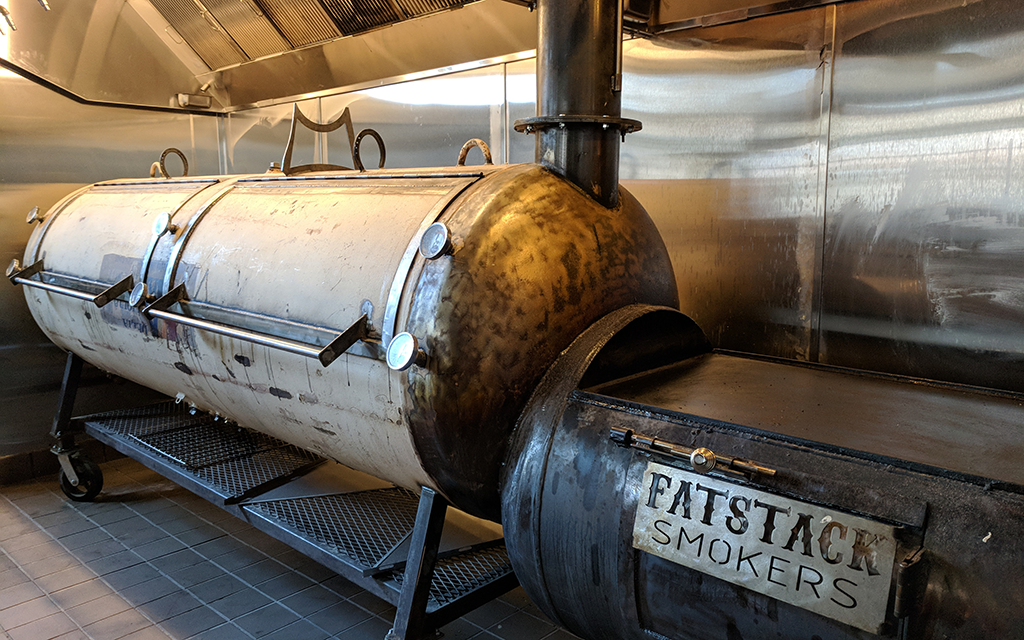
One unifying principle? Chicago’s smokers are built for the indoors.
“In Chicago we have a different style smoker than people generally use, and that’s because we have a thing called winter,” Bruns explains. At Flat & Point, they operate a hulking 500-gallon repurposed propane tank smoker custom-made by Fat Stack Smokers in Los Angeles alongside an Argentinian wood-fired grill. “In Texas, they can have five or six ,000-gallon smokers outside all year and the weather’s fine. Whereas here, putting just one of those things inside was an engineering challenge and a legal challenge and a health-department challenge. There were all these massive hurdles to step over just to get this one piece of equipment, because nobody had ever put inside before.”
“Something pretty unique to Chicago is the use of an aquarium smoker,” Downing Salas says. “Think of a big rectangular fish tank, like a glass box with an area below to add wood and tend to the fire. I haven’t worked with one. We utilize a carousel smoker so we can easily smoke 20 briskets at a time, whereas aquarium smokers, they’re not that big. But I grew up in Elgin, and there’s a place out there, Elgin BBQ Pit, with an aquarium. It’s a small little walk-in counter spot and their aquarium smoker is right there, right up front. You can see the meat going all day long.”
“We use in-house smokers,” says Robinson. “You either cook in an aquarium or use a Southern Pride smoker — it’s a dividing line, one or the other. Our main is a Southern Pride smoker and it’s a really big one. I can smoke a couple of hundred pounds of meat in there at one time.”
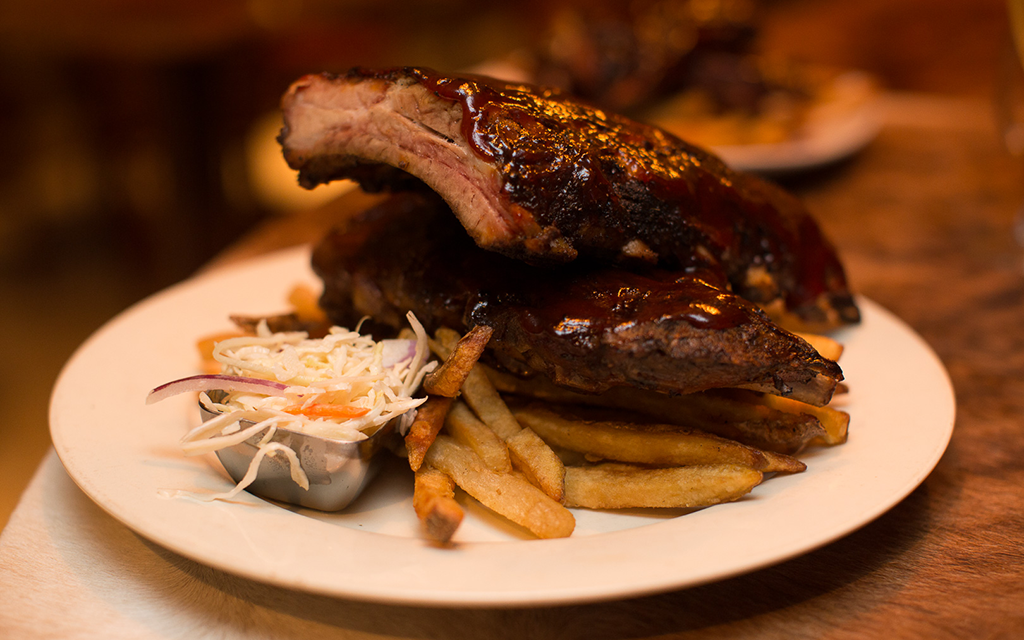
If there’s a signature dish, it’s ribs
“Chicago has always been a rib city,” says Doug Psaltis, Chef-Partner at River North roadhouse Bub City. “From racks of ribs to rib tips on South Side showcased in aquarium smokers, like at Lem’s Bar-B-Q.”
“We sell a lot of rib tips,” Robinson adds. “If you were to compare it to beef, the rib tip is the meat that you have to butcher to get the tenderloin out. People used to throw them away, but it’s very tender, very moist, and it’s a big thing on the Southside and we’ve been doing it for awhile. We put a dry rub on it, smoke for two, three hours and then toss it in sauce per customer order and serve it with french fries and white bread. And you have to wrap it in paper — that’s the staple.”
“You definitely see a lot of ribs,” explains Downing Salas. “There’s boiled ribs in some areas, probably coming from Eastern Europeans bringing the tradition of boiling meats over, sometimes smoking them and then quick-finishing them on a grill or over an open pit when they’re mostly cooked. Rib tips are a big thing here, doing that combo of rib tips and sausage and fries with a tomato-based sauce over white bread, that’s what you’ll find in a lot of the smaller BBQ shacks. We serve our cut burnt ends on top of white bread with a little bit of our sauce on it, so we adopted that as well.
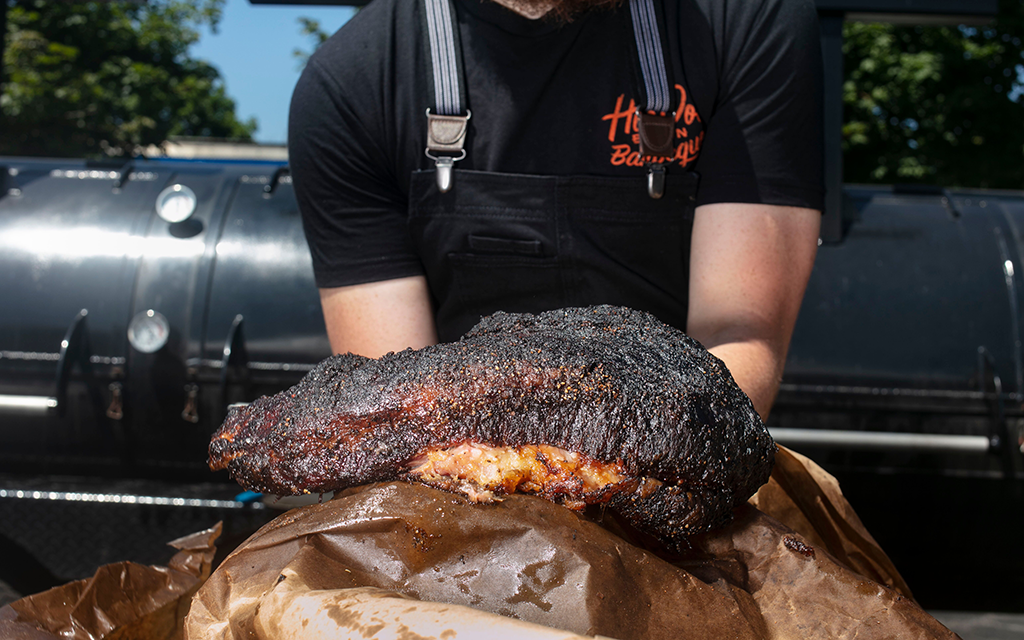
And anybody’s welcome to dive on in
“We have a really good BBQ culture, from the old-school spots on the Southside to all of the newer places around town,” says McKenna. “It’s also great that most of us are friends and really cheer for each other to be successful.”
“We try to find new and interesting ways to butcher animals so we can get different cuts out of it, smoke things differently, put together different types of dishes that have a familiar flavor profile but with an added layer of smoke so you’re combining BBQ with Indian food or BBQ with Thai food,” says Bruns. “To me, if you come to Flat & Point, you’re not just coming for great ribs, you’re coming to eat the food that I like. A lot competition people come into the restaurant and I have to remind them that this is a restaurant, not a competition. I’m not here to make better Memphis-style, better Texas-style, better South Carolina-style, whatever. I’m here to do what I love to do.”
“I grew up in the suburbs eating my mom or grandma’s version of BBQ — you know, throwing a pork butt or a beef roast into a crock pot with a bottle of sauce,” Downing Salas recalls. “That’s not anything close to what we do here. When the opportunity arose for me to come on board at Smoke Daddy, these guys already had their methods, recipes and sauces in place for years. I was there to step in, oversee the kitchen, and learn all I could about BBQ. It’s something I’ve always had a great appreciation for but not deep roots, so to be able to jump in and be part of this restaurant and learn at the same time, I’m fortunate for that.”
”We like to think of ourselves as a traditional Chicago BBQ house, but we do have little twists,” adds Robinson. “Some of the ingredients, some of the sauces that we carry and some of our smoking methods are a little unconventional. I’m originally from the East Coast, where our BBQ was steak or seafood, usually lobster. Anytime you can smoke anything, it’s good.”
This article was featured in the InsideHook Chicago newsletter. Sign up now for more from the Windy City.
